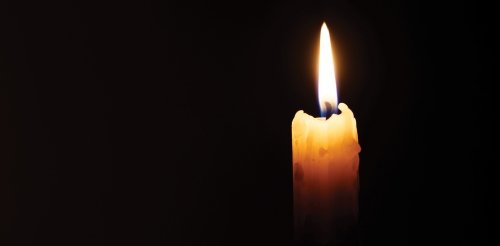Reimagining Safety After a Mass Shooting
Asian American studies professor Kathy Yep asks what it means to be “safe” in the wake of a mass shooting in Monterey Park, California.

This piece is excerpted from an article published in Lion’s Roar: Buddhist Wisdom for Our Time
My students and I tutored participants of the adult literacy program at the public library not too far from the site of the mass shooting in Monterey Park, California, in January for over ten years. When I saw the grainy photo of the shooter, Huu Can Tran, I felt like he could be an uncle in my family — or perhaps someone I'd met for tutoring at the local library. My mind raced as I began to think of those in my community. I struggled to practice returning to my breath and the present moment.
At the library, immigrants and refugees worked with me and my students to prepare for the U.S. naturalization exam and practice conversational English. An older immigrant man, “Julian,” always showed up early to our class. After much time together, he shared the cumulative grief of his experience being imprisoned in a “re-education camp” after the U.S. military left Vietnam. He reflected on the challenges of surviving as a working-class, Asian male refugee in the U.S. “In my own language I can say everything,” he told me. “Here, I am nothing.”
I implore us to reimagine what it means to be “safe.”
–Kathy Yep
A married couple, “the Lees,” would come to class diligently. It slowly came out that they loved to ballroom dance. Their faces lit up as they described dancing in Monterey Park. For them, dancing was a space of freedom, joy, community, and creativity in the face of past historical trauma and current uncertainty as low wage workers seeking U.S. citizenship. ...
Since the mass shooting, I've been continually checking my email and the news to see if Julian, the Lees, and others are listed as dead. After the shooter, Mr. Tran, was found dead after a standoff, I keep seeing the refrain that we are now “safe” — that we should heal as a community. I keep mulling over these words: “safety” and “healing.” What does it mean to be safe in this situation? What does it mean to heal? How do we recognize the suffering in this moment and return to our breath? ...
As I wait to hear if Julian, the Lees and others are alive, my heart hurts. I yearn for us to ask, reflect, and act upon deeper questions. Mr. Tran acquired assault weapons meant for a battlefield and used them in a dance studio. Just as Julian, the Lees, and I notice suffering and our breath at the Monterey Park library, I want us to notice how war, gendered violence and militarization impact our daily lives. How did war, violence, and militarization affect Mr. Tran as an Asian male and those around him? How were his basic needs of food and mental health care met or not met before this mass killing? ...
I implore us to reimagine what it means to be “safe” — a place to dance in community, to breathe and heal from war and trauma, to have our basic needs for food and mental healthcare met. “Safety” can be honoring and respecting fundamental human dignity, gender, and cultural identities, with mindfulness and breath — just like Julian and the Lees.

Yep is professor of Asian American studies. An excerpt from her commentary on the January 21 mass shooting in Monterey Park, California, is printed with permission from Lion’s Roar: Buddhist Wisdom for Our Time. Read the full piece here.